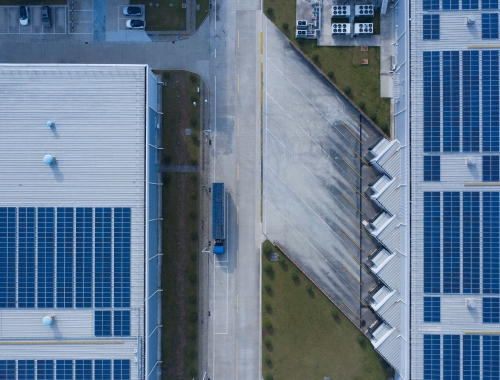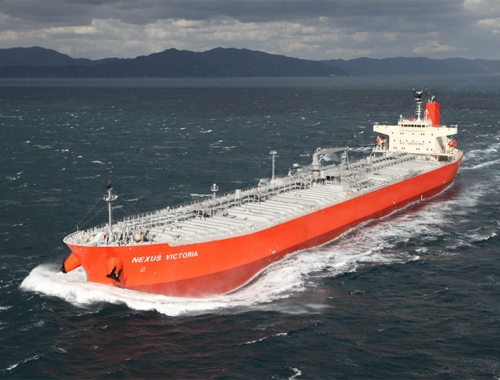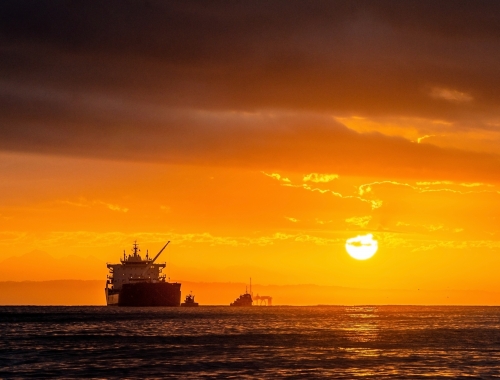Norway, UK help drive North Sea CCS momentum
SUMMARY
Various CCS projects are under development in the North Sea as medium-term decarbonisation targets get closer.
By Anna KachkovaAs the world comes closer to medium-term decarbonisation targets, many of which have been set for 2030, the push to cut CO2 emissions is gaining urgency. The oil and gas industry is looking to carbon capture and storage (CCS) – also known as carbon capture, utilisation and storage (CCUS) – to play a significant role in its efforts to decarbonise both itself and other industries. And the North Sea has become one of the major new hubs of CCS development.
“The North Sea is an ideal candidate for widespread CCUS adoption due to its abundance of well-mapped carbon storage sites (in the form of depleted oil and gas reservoirs) and close proximity to large point emission sources, which helps to reduce transportation costs,” an oil and new energy consultant at Facts Global Energy (FGE), Joshua Folds, told Gas Pathways. “The coastal nature of the North Sea also encourages the development of CCUS hubs where a number of point emission sources of CO2 can utilise the same CO2 transport and storage infrastructure, such as the East Coast Cluster and HyNet projects in the UK,” he said.
“CCUS hubs also facilitate the transport of CO2 from other areas of Europe to storage sites around the North Sea by ship or pipeline which helps to rapidly develop the carbon capture value chain,” Folds added.
Early momentum
There are numerous North Sea projects beyond the UK ones cited by Folds. Norway is behind much of the early momentum for CCS in the region. Folds pointed to the only two active commercial-scale facilities in the North Sea currently, with a capture capacity of more than 100,000 metric ton/year of CO2 – Norway’s Sleipner and Snøhvit projects.
Meanwhile, Oxford Institute of Energy Studies senior research fellow and head of carbon management research Hasan Muslemani noted Norwegian projects’ role in driving forward cross-border CO2 transport and storage initiatives. He cited examples such as a 2022 agreement to transport CO2 from the Netherlands to be stored offshore Norway, which he said was set to become a precedent for similar agreements at a company level, but also likely the national level. Another example that Muslemani said could pave the way for others to follow suit is a 2022 agreement between a UK waste incinerator that will ship CO2 to a subsea storage facility in Norway. And most recently, the German and Norwegian governments reached an agreement for cross-border transport of German CO2 for storage in the North Sea.
“All of these developments have been led by the Northern Lights project in Norway,” Muslemani said. “I think Northern Lights will continue to lead most developments of CCS in the North Sea.”
Folds also noted the importance of Northern Lights to the development of the CCUS value chain in the region.
“The project incorporates the first commercial deal to transport CO2 across international borders. CO2 will be transported by ship from the capture site at Yara Sluiskil, an ammonia and fertiliser plant in the Netherlands, to storage site at Equinor-operated Northern Lights in Norway,” he said. “The development of international transportation of CO2 is essential for widespread adoption of CCUS.”
As well as Northern Lights, Folds considers the UK’s HyNet and East Coast Cluster projects to be worth watching.
“HyNet and the East Coast Cluster are significant as they are the ‘Track 1’ projects granted UK government funding as part of its £1bn [$1.2bn] infrastructure fund,” he said. “These two projects aim to capture and store a combined 37mn mt/yr CO2 by 2030 and will be the first commercial scale CCUS projects in the UK, due to begin operation around 2025 and 2027 respectively,” he continued.
“Both HyNet and the East Coast Cluster are significant as they will develop the CCUS value chain in the UK and prove it can be commercially viable,” Folds said. “The UK wants to position itself as a market leader in CCUS and has strict climate targets including having a CCUS capacity of 20-30 mmtpa CO2 by 2030 and be net-zero by 2050.”
Indeed, strict targets are expected to be major drivers for CCUS development.
“The legal need to meet climate targets both set by governments and companies often heavily incorporates CCUS as a method of decarbonisation,” Folds said. “This is especially true for so-called ‘hard to abate’ industries, such as cement and steel manufacturing.”
Muslemani also pointed to the UK as having a CCUS industry that is worth watching.
“The UK is also currently exploring business models for industrial carbon capture which will certainly drive more confidence in this market in the region,” he said. “Overall, as companies are realising the importance of carbon capture and its role in abating their residual emissions, momentum is set to continue to develop throughout this year and beyond.”
Optimism amid challenges
Muslemani sees “the existence of a clear and robust set of regulations for underground CO2 storage as set by the 2009 EU CO2 Storage Directive” as a reason to be optimistic about the CCUS industry’s potential. He noted that these regulations have already been adopted in Norway and tested there for over a decade.
“The expectations were that the Norwegian experience would incentivise developments elsewhere in Europe/UK much earlier, but we did not see this movement pick up pace until the past few years,” Muslemani said. “This is because industrial clusters are now developing around the North Sea and there are now clear signs that CO2 will flow from these industrial point sources, which gives a clear signal for investment in transport and storage infrastructure, most of which leads to and/or crosses the North Sea.”
There is a considerable way to go, however, if the North Sea is to reach its full CCS potential.
“The UK government estimates that £15bn [$18.4bn] of private investor funding into CCS is need between 2033-37 (period of the UK’s sixth carbon budget) to meet net-zero targets,” Folds said. “The UK emitted an estimated 342mn mt/yr of CO2 in 2021. If this was reduced to zero by CCS alone then we estimate this would cost $26bn or £21bn. For the EU-27, with CO2 emissions totalling some 2.8 gigaton/year, then the cost would be $210bn or £172bn.”
According to Folds, the North Sea is estimated to have the potential to hold around 160 gigatons of CO2, which is the equivalent of 51 years of current EU-27 and UK combined total CO2 emissions.
“The region therefore has an abundance of storage and could even accommodate transporting CO2 emissions to it for storage from around the world,” Folds said.
More needs to be done, however, to spur private sector investment into CCUS at this scale. National and EU-wide decarbonisation targets form one part of the equation, but players in the nascent industry are also counting on financial incentives to help make new investments viable.
“For CCS to reach its potential, the government could provide tax credits, such as the 45Q in the US, which directly pays CCS operators on a tonne-stored CO2 basis. This would lead to an explosion in CCUS project announcements, similar to what we saw in the USA in 2022,” Folds continued.
“Improved legislation would also facilitate the adoption of European CCUS,” Folds said. “There are significant gaps in laws and regulations throughout the CCUS value chain, including detailed carbon accounting of moving CO2 across international borders. This is key for CCUS to really develop as countries need to be able to move CO2 from areas with poor storage to areas of high storage.








